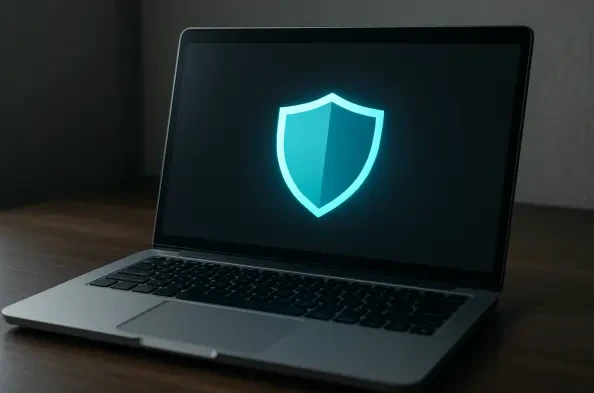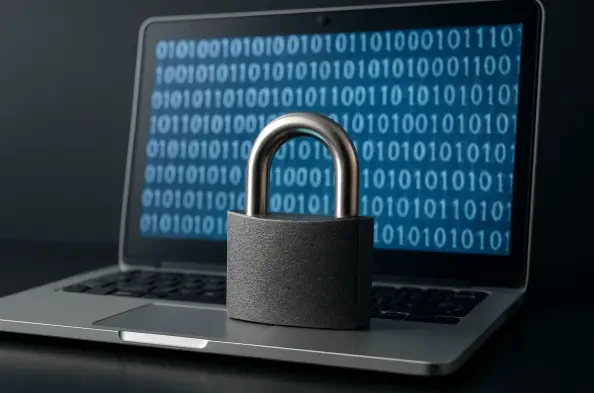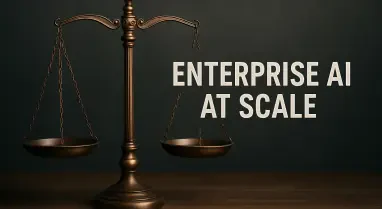In the fast-paced digital landscape of today, where cyber threats evolve with alarming speed and sophistication, countless Windows users remain anchored to outdated notions about their system’s safety. Microsoft Windows, powering millions of devices across the globe, is a prime target for attackers, yet many harbor misconceptions that could expose them to ransomware, phishing scams, and other devastating breaches. The stakes are higher than ever, as personal data, financial security, and even workplace systems hang in the balance. These persistent myths aren’t mere trivia—they shape how users approach their digital defenses, often leading to complacency or misplaced trust in ineffective solutions. This exploration aims to dismantle these fallacies, shedding light on the real risks and offering practical guidance to fortify protection against modern dangers.
Cybersecurity isn’t a static checkbox to mark off but a continuous effort against adversaries who adapt faster than many can keep up. A significant gap exists between the reality of current threats and the assumptions held by users, creating fertile ground for exploitation. Some believe a single app or setting offers complete immunity, while others dismiss vital practices as unnecessary hassles. Unpacking these myths reveals patterns of overconfidence and outdated thinking that can have dire consequences, whether for a casual home user or a business handling sensitive information. The time has come to challenge these beliefs and build a more resilient security posture.
Debunking Common Windows Security Misconceptions
Myth 1: You Need to Pay for Antivirus Software
The notion that premium antivirus software is a must for Windows security persists among many users, driven by a historical lack of robust built-in options in earlier versions of the operating system. However, since Windows 8, Microsoft Defender has been integrated as a free, capable tool that matches or exceeds many paid alternatives in malware detection, as confirmed by independent testing labs. Free third-party options like Avast also provide solid protection without the hefty price tags—often around $100 annually—that come with premium plans boasting extras such as phishing safeguards or Wi-Fi security checks. For the average user engaging in routine online activities like browsing or streaming from trusted sources, these additional features offer minimal benefits compared to fundamental practices like securing a home network with a strong password. This outdated belief not only burdens users with unnecessary costs but also diverts attention from more impactful security measures that don’t require a subscription.
Beyond the financial aspect, this myth reflects a broader tendency to equate cost with quality, overlooking the effectiveness of no-cost solutions in today’s cybersecurity landscape. Microsoft Defender, for instance, updates automatically to tackle emerging threats, a feature that rivals even high-end paid software for most personal use cases. The real value lies in user education—knowing when a paid tool might be warranted, such as for specialized business needs involving frequent public Wi-Fi usage, versus relying on built-in or free protections for standard risks. Instead of funneling money into redundant software, resources could be better allocated to tools like password managers or external backups, which address gaps that antivirus programs can’t cover. Dispelling this misconception empowers users to make informed choices, focusing on a balanced approach rather than a marketed sense of security.
Myth 2: Windows Security Offers Perfect Protection
Many users place unwavering trust in Microsoft Defender, assuming it serves as an impenetrable barrier against all forms of cyber threats. While this built-in tool excels at detecting and neutralizing a wide range of malware, it falls short against non-technical attacks like social engineering, where users are deceived into divulging sensitive information through fake emails or fraudulent websites. Additionally, it has no control over external data breaches—such as those affecting online retailers or services—where passwords might be exposed without any interaction on the user’s system. This overreliance can breed a false sense of invincibility, leading to neglect of essential habits like scrutinizing unsolicited messages or enabling two-factor authentication (2FA) on critical accounts. Without these complementary practices, even the strongest software leaves vulnerabilities wide open for exploitation.
This myth also underscores a critical misunderstanding of cybersecurity as a purely technological issue rather than a blend of tools and human vigilance. A phishing scam, for example, might mimic a legitimate communication from a trusted entity, prompting a user to click a malicious link that no antivirus can block if the action is voluntary. Similarly, if a third-party service leaks login credentials, the resulting account compromise bypasses local defenses entirely. Users must adopt a mindset of layered security, where software acts as one shield among many, including regular monitoring of account activity and skepticism toward unexpected requests for information. Recognizing the limits of tools like Microsoft Defender is the first step toward building a more comprehensive defense strategy that accounts for both digital and behavioral threats.
Underestimating Risks and Behavioral Pitfalls
Myth 3: Updates Are Unimportant
A widespread frustration among Windows users is the perception that system updates are little more than inconvenient interruptions, often arriving at the worst possible moment during work or personal projects. However, these updates are far from optional—they deliver critical patches for security vulnerabilities and bug fixes that could otherwise be exploited by attackers to gain unauthorized access or deploy malware. Ignoring or delaying them, even for a short period, creates a window of opportunity for threats that target known flaws, a risk that only grows as unaddressed issues accumulate. The inconvenience of a restart pales in comparison to the potential fallout of a breach, which could compromise personal data or disrupt entire systems. Updates are a foundational element of maintaining a secure environment, and dismissing them reflects a dangerous prioritization of short-term ease over long-term safety.
The reluctance to update often stems from a lack of awareness about the direct link between these patches and protection against real-world attacks. Historical incidents, like ransomware campaigns that exploited unpatched systems, serve as stark reminders of what’s at stake when updates are sidelined. In the current digital climate, where threats evolve rapidly, a single missed update could expose a system to zero-day exploits—flaws unknown until they’re actively used against users. Customizing update schedules through Windows settings to avoid disruptions during active hours can mitigate annoyance, but the practice must remain non-negotiable. This myth highlights a broader challenge of security fatigue, where constant maintenance feels burdensome, yet it reinforces that consistent system care is not a luxury but a necessity to stay ahead of ever-adapting adversaries.
Myth 4: Only EXE Files Are Dangerous
A lingering assumption among many Windows users is that malware is exclusively tied to executable (EXE) files, leading to a false sense of safety when handling other formats. In reality, threats can lurk in seemingly benign file types like PDFs, ZIP archives, and scripts, which can embed malicious code that activates upon opening or extraction. Compounding this risk is Windows’ default setting to conceal file extensions, meaning a dangerous file named “document.pdf.exe” might appear simply as “document.pdf,” tricking users into believing it’s harmless. This narrow focus on one file type ignores the creativity of modern attackers who exploit trust in everyday formats. Without a healthy suspicion of all unfamiliar downloads or attachments, and without adjusting system settings to display full extensions, users remain at the mercy of deceptive tactics that bypass casual scrutiny.
This misconception also points to a gap in understanding how threats have evolved beyond traditional vectors to exploit user habits and system defaults. For instance, a PDF might contain hidden scripts that install spyware when viewed, while a ZIP file from an unverified source could unpack ransomware upon access. Such scenarios are not hypothetical but increasingly common as attackers leverage file types associated with routine tasks to lower defenses. Adjusting Windows Explorer to reveal complete file names is a simple yet effective countermeasure, as is maintaining a policy of verifying the source of any file before interaction. Education plays a pivotal role here—users must internalize a zero-trust approach, treating every file as a potential risk until proven otherwise. This shift in mindset is essential to counter the sophisticated methods that outpace outdated assumptions about digital safety.
Facing Systemic and Personal Vulnerabilities
Myth 5: Using Windows 10 for Years More Is Safe
With the official end of support for Windows 10 on October 14 of this year, continuing to use it beyond this cutoff poses an escalating threat that many users fail to recognize. Once Microsoft halts security updates and patches, any newly discovered vulnerabilities will remain unaddressed, leaving systems exposed to attacks that could range from data theft to full system compromise. Additionally, third-party applications, including browsers and productivity tools, will gradually drop support, forcing reliance on outdated, insecure versions or creating compatibility issues. This isn’t merely a matter of inconvenience but a direct invitation to cybercriminals who target unsupported software as low-hanging fruit. Upgrading to Windows 11, provided hardware meets the requirements, or switching to an alternative like Linux, becomes not just a recommendation but a pressing need to maintain a secure operating environment.
The dangers of clinging to Windows 10 also reflect a broader resistance to change, often driven by familiarity or cost concerns, which can blind users to the ticking clock of obsolescence. Consider a small business relying on legacy software tied to this operating system—post-support, a single unpatched flaw could allow attackers to infiltrate networks, stealing client data or disrupting operations. Even for individual users, online activities like banking or shopping become precarious without the latest protections. The transition to a supported platform, while potentially challenging due to learning curves or hardware upgrades, is a critical investment in long-term safety. This myth serves as a reminder that operating system lifecycles are an integral part of cybersecurity, and ignoring them equates to gambling with digital integrity in an era where threats spare no one.
Myth 6: I Won’t Ever Be a Target
A pervasive and risky belief among Windows users is that their personal insignificance shields them from the attention of cybercriminals, a notion that couldn’t be further from the truth. Attackers don’t discriminate based on perceived importance—personal accounts can be hijacked to reset passwords through email access, impersonate users on social media to scam contacts, or convert devices into botnets for larger malicious campaigns. Even saved payment information on shopping sites or browsers can be exploited for fraudulent purchases, while personal data fuels tailored attacks. In today’s interconnected digital ecosystem, every user holds value, whether as a direct target or a stepping stone to bigger prey. Underestimating this reality often leads to lax security practices, amplifying the potential for personal and financial harm.
This myth also exposes a critical disconnect between the scale of modern cybercrime and individual awareness of risk. Automated tools enable attackers to cast wide nets, targeting thousands simultaneously with customized phishing emails or malware-laden links, making personal obscurity irrelevant. A compromised email, for instance, might allow fraudsters to drain a retirement account by resetting credentials, or a hijacked social profile could deceive loved ones into sending money under false pretenses. Securing digital life with strong, unique passwords, enabling 2FA wherever possible, and monitoring for unusual activity are non-negotiable steps to counter these threats. The lesson here transcends technology—it’s about recognizing that everyone’s online presence carries inherent worth to malicious actors. Adopting a proactive stance, rather than assuming immunity, is the only way to navigate the current landscape of pervasive digital danger.
Building a Stronger Defense for Tomorrow
Rethinking Security Habits
Reflecting on the myths that once shaped perceptions of Windows security, it’s evident that many users previously underestimated the complexity of digital threats. Misconceptions about the necessity of paid antivirus, the infallibility of built-in tools, or the irrelevance of updates often guided decisions that left systems exposed. Similarly, narrow views on file dangers, reluctance to abandon unsupported platforms like Windows 10, and the belief in personal invisibility to hackers compounded vulnerabilities over time. These outdated ideas, once widely accepted, were dismantled through a deeper understanding of how attackers exploit both technical gaps and human oversight. Looking back, the journey from assumption to awareness highlighted the need for constant reevaluation of security practices in a landscape that never stands still.
Embracing Proactive Measures
Moving forward, the focus must shift to actionable steps that fortify Windows systems against evolving risks. Regularly installing updates, regardless of their timing, ensures vulnerabilities are patched before they’re exploited. Adjusting settings to display full file extensions and exercising caution with all downloads counters deceptive threats beyond traditional malware. Upgrading to supported operating systems and securing accounts with robust passwords and 2FA addresses systemic and personal risks head-on. Staying informed about current cyber trends and questioning long-held beliefs further builds resilience. These measures, grounded in the lessons of past oversights, empower users to adapt to new challenges, ensuring safety isn’t just a reaction but a deliberate, ongoing commitment to vigilance.






